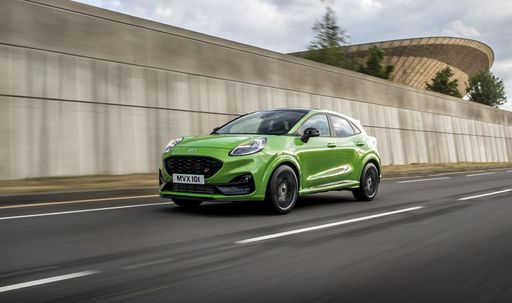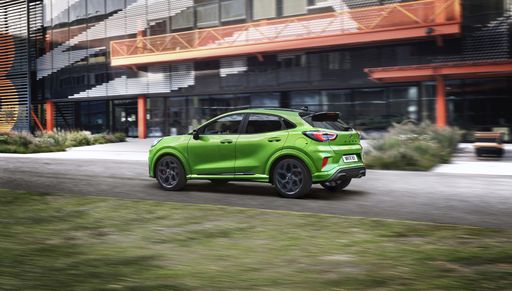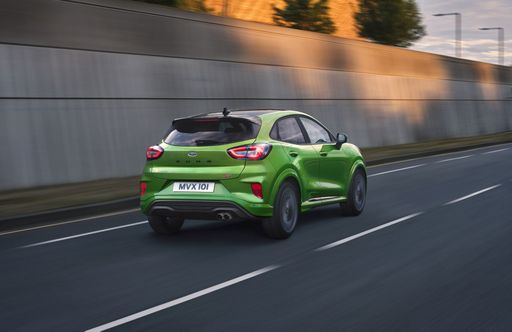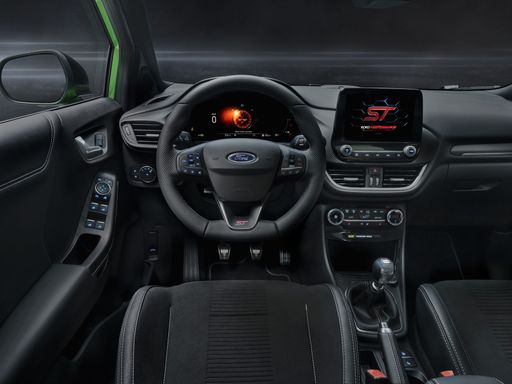Ford Puma vs Renault R4 - Differences and prices compared
Costs and Efficiency:
When it comes to price and running costs, the biggest differences usually appear. This is often where you see which car fits your budget better in the long run.
Ford Puma has a slight advantage in terms of price – it starts at 24800 £, while the Renault R4 costs 25200 £. That’s a price difference of around 429 £.
In terms of energy consumption, the advantage goes to the Ford Puma: with 13.10 kWh per 100 km, it’s slight more efficient than the Renault R4 with 14.20 kWh. That’s a difference of about 1.10 kWh.
As for range, the Renault R4 performs hardly perceptible better – achieving up to 409 km, about 33 km more than the Ford Puma.
Engine and Performance:
Under the bonnet, it becomes clear which model is tuned for sportiness and which one takes the lead when you hit the accelerator.
When it comes to engine power, the Ford Puma has a somewhat edge – offering 168 HP compared to 150 HP. That’s roughly 18 HP more horsepower.
In acceleration from 0 to 100 km/h, the Ford Puma is to a small extent quicker – completing the sprint in 7.40 s, while the Renault R4 takes 8.20 s. That’s about 0.80 s faster.
In terms of top speed, the Ford Puma performs evident better – reaching 210 km/h, while the Renault R4 tops out at 150 km/h. The difference is around 60 km/h.
There’s also a difference in torque: Ford Puma pulls to a small extent stronger with 290 Nm compared to 245 Nm. That’s about 45 Nm difference.
Space and Everyday Use:
Beyond pure performance, interior space and usability matter most in daily life. This is where you see which car is more practical and versatile.
Seats: offers more seating capacity – vs .
In curb weight, Ford Puma is to a small extent lighter – 1316 kg compared to 1485 kg. The difference is around 169 kg.
In terms of boot space, the Ford Puma offers to a small extent more room – 523 L compared to 420 L. That’s a difference of about 103 L.
In maximum load capacity, the Renault R4 performs hardly perceptible better – up to 1405 L, which is about 122 L more than the Ford Puma.
When it comes to payload, Ford Puma barely noticeable takes the win – 469 kg compared to 443 kg. That’s a difference of about 26 kg.
Who comes out on top?
Overall, the Ford Puma shows itself to be is largely superior and secures the title of DriveDuel Champion.
It convinces with the more balanced overall package and proves to be the more versatile choice for everyday use.
 @ Ford Motor Company / Ford Media Center
@ Ford Motor Company / Ford Media Center
Ford Puma
Costs and Consumption
View detailed analysis
Engine and Performance
View detailed analysis
Dimensions and Body
View detailed analysis
Ford Puma
The Ford Puma is a cheeky compact crossover that blends sporty styling with city-friendly practicality, giving drivers a surprisingly fun and composed ride. With clever storage tricks and a lively personality, it’s a smart pick for buyers who want enjoyment without fuss.
details @ Ford Motor Company / Ford Media Center
@ Ford Motor Company / Ford Media Center
 @ Ford Motor Company / Ford Media Center
@ Ford Motor Company / Ford Media Center
 @ Ford Motor Company / Ford Media Center
@ Ford Motor Company / Ford Media Center
 @ Ford Motor Company / Ford Media Center
@ Ford Motor Company / Ford Media Center
Renault R4
The Renault R4, affectionately known as the "R4," is a quintessential symbol of French automotive simplicity and practicality. This classic compact car, originally introduced in the early 1960s, won over numerous enthusiasts with its versatile design and dependable performance. Its no-frills charm and robust build made it a beloved choice for rural drivers and city dwellers alike, cementing its status as an iconic piece of automotive history.
details
 @ Ford Motor Company / Ford Media Center
@ Ford Motor Company / Ford Media Center
|
|
|
|
|
Costs and Consumption |
|
|---|---|
|
Price
24800 - 36300 £
|
Price
25200 - 31200 £
|
|
Consumption L/100km
5.4 - 5.9 L
|
Consumption L/100km
-
|
|
Consumption kWh/100km
13.1 - 13.9 kWh
|
Consumption kWh/100km
14.2 - 15.1 kWh
|
|
Electric Range
361 - 376 km
|
Electric Range
308 - 409 km
|
|
Battery Capacity
43 kWh
|
Battery Capacity
40 - 52 kWh
|
|
co2
0 - 135 g/km
|
co2
0 g/km
|
|
Fuel tank capacity
42 L
|
Fuel tank capacity
-
|
Dimensions and Body |
|
|---|---|
|
Body Type
SUV
|
Body Type
SUV
|
|
Seats
5
|
Seats
5
|
|
Doors
5
|
Doors
5
|
|
Curb weight
1316 - 1563 kg
|
Curb weight
1485 - 1537 kg
|
|
Trunk capacity
456 - 523 L
|
Trunk capacity
420 L
|
|
Length
4186 - 4226 mm
|
Length
4144 mm
|
|
Width
1805 mm
|
Width
1808 mm
|
|
Height
1550 - 1555 mm
|
Height
1552 mm
|
|
Max trunk capacity
1216 - 1283 L
|
Max trunk capacity
1405 L
|
|
Payload
367 - 469 kg
|
Payload
410 - 443 kg
|
Engine and Performance |
|
|---|---|
|
Engine Type
Electric, Petrol MHEV
|
Engine Type
Electric
|
|
Transmission
Automatic, Manuel
|
Transmission
Automatic
|
|
Transmission Detail
Reduction Gearbox, Manual Gearbox, Dual-Clutch Automatic
|
Transmission Detail
Reduction Gearbox
|
|
Drive Type
Front-Wheel Drive
|
Drive Type
Front-Wheel Drive
|
|
Power HP
125 - 168 HP
|
Power HP
122 - 150 HP
|
|
Acceleration 0-100km/h
7.4 - 9.8 s
|
Acceleration 0-100km/h
8.2 - 9.2 s
|
|
Max Speed
160 - 210 km/h
|
Max Speed
150 km/h
|
|
Torque
170 - 290 Nm
|
Torque
225 - 245 Nm
|
|
Number of Cylinders
3
|
Number of Cylinders
-
|
|
Power kW
92 - 124 kW
|
Power kW
90 - 110 kW
|
|
Engine capacity
999 cm3
|
Engine capacity
-
|
General |
|
|---|---|
|
Model Year
2025
|
Model Year
2025
|
|
CO2 Efficiency Class
A, D
|
CO2 Efficiency Class
A
|
|
Brand
Ford
|
Brand
Renault
|
Is the Ford Puma offered with different drivetrains?
The Ford Puma is offered with Front-Wheel Drive.
The prices and data displayed are estimates based on German list prices and may vary by country. This information is not legally binding.
